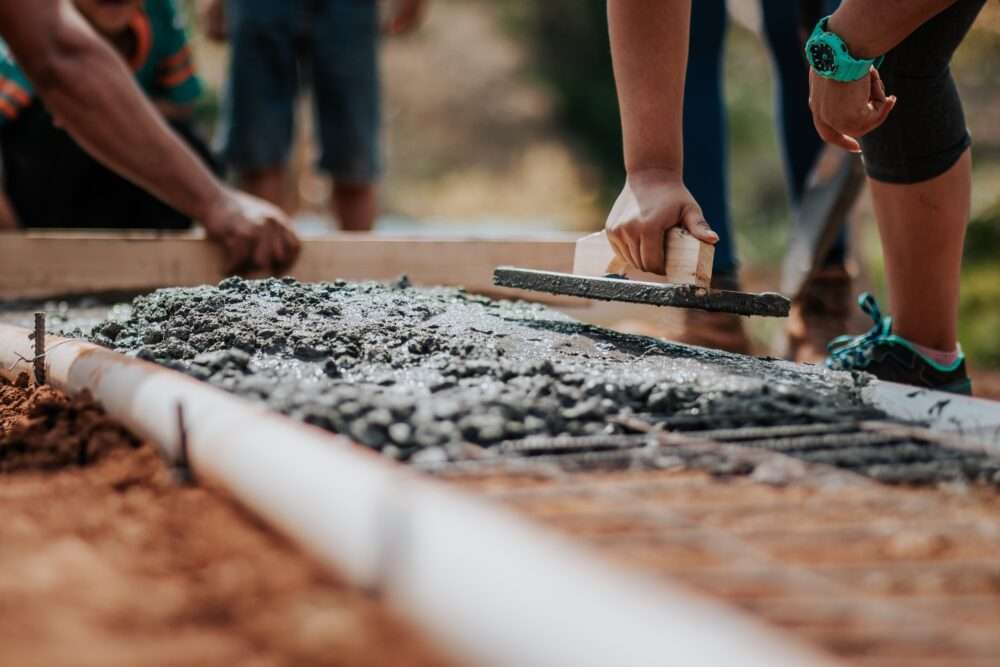The Covid-19 pandemic has undoubtedly been a serious calamity on many levels.
From the high death toll to the long-term impact of global GDP,
this health emergency will be a source of bitter memories for a very long time.
Although the pandemic has brought many changes to our daily lives,
it has also changed the way all major industries operate.
And for the construction industry, which has always been really slow to absorb technological advances,
the pandemic has revealed a great degree of resilience and versatility under very difficult circumstances.
This article explores seven ways in which AI can change the construction landscape during the COVID-19 pandemic.
-
Construction site monitoring with AI-powered software
During the closures, while some projects were able to progress at the expected rate,
Team leaders on these projects had to constantly look for reliable ways to keep their workers safe.
An innovative automatic video surveillance system was developed using artificial intelligence
which has proven to be a remarkably powerful tool for safety monitoring.
Smartvid.io has improved its image processing software to recognize if workers are wearing masks and gloves.
The software can also estimate the distance between workers to ensure social distancing on construction sites.
Smartvid.io CEO Josh Kanner also stated that after analyzing millions of images across construction sites in the US,
Promising results were obtained that showed strict adherence to Covid-19 standards.
2. Using augmented reality to enable collaboration
Another example of a trend that has quickly picked up pace in the past year is the use of augmented reality
to allow construction workers to work remotely and deliver projects on time.
Stefania Radopoulou, supervisor at Trimble, summed up the trend as follows:
“With universal augmented reality connectivity and wireless connectivity in the field and back to the workplace, or at home,
Or even in a coffee shop, it is possible to work as a team online, save time, and make profits on projects.”
3. Go Paperless
The idea of a paperless office has been around for a long time, but not many organizations have truly achieved this impressive goal.
However, the use of paper has now decreased in the construction industry as employees prefer digital media over paper documents to reduce human contact.
Joe Polacek, design engineer at Stantec, has seen a significant change in project outcomes since the onset of the pandemic.
He noted that the use of drones, augmented reality,
and online commitment have played an important role in project talks in the past few years and reduced the use and abuse of paper.
And since people have been working from home and maintaining social distance,
It would not be wrong to conclude that everyone finds it easier to visualize things through AI-powered software than to use paper workflows.
4. Analytics-based supply chain management
One of the realities that the pandemic immediately exposed was the way in which every link in the supply chain had become interconnected.
As lockdowns and reduced cash flow began to affect suppliers and workers,
the spontaneous collapse of the supply chain created a domino effect that led to multiple delays even in areas not under lockdown.
Most progressive organizations in the field of construction rely primarily on the various links in the supply chain.
For example, building materials are supplied by some local distributors
and thus projects were affected during the Covid-19 lockdown because the link between local distributors was not properly maintained.
During lockdowns, dynamic correspondence and joint efforts were missing and when circumstances changed unexpectedly, companies were not ready to adapt.
At Southern Construction Company in the UK,
supply chain expert Adam Sanford has developed AI-powered software to manage supply chain data.
He said moving to a smarter production network that accepts direct communications
and joint efforts with subcontractors will bring great benefits to the construction industry.
5. Building smart cities
Due to the economic slowdown caused by the pandemic, the idea of building smart cities has become a distant dream for some countries.
But at the same time, the situation appears to be the opposite in countries such as Singapore and the United Arab Emirates.
In June 2020, Singapore chose to increase its investment in the digitization of its construction industries by 30%.
The construction engineers used the latest technical tools to counter COVID-19 by applying artificial intelligence,
data analytics and sensor technologies.
6. Cybersecurity measures
The need for cyber security will be naturally high for the construction industry as it now relies heavily on digital technology.
And since the pandemic, employees have been working remotely,
often on a less secure wireless connection than can be accessed in the workplace.
Recently, Canalys published a report stating that the cyber security market will increase by $50 billion in 2021.
The market will cover network security, information security, endpoint security shipments,
email and web security, security analytics, and identity access management.
7. Digital construction
Building organizations that have effectively undergone a major digital transformation
have found it much easier to adapt to situations of social distancing and working from home.
This applies to both offsite and onsite work because of the availability of connected building technology solutions,
which teams can quickly collaborate with.
These solutions allow all construction teams to work more efficiently and effectively.
Last year, an AI-powered engine, called Togal.AI, was developed to generate estimates of construction site quantities.
The AI engine uses AIA measurement standards to automatically and accurately detect,
name, and measure project areas and objects in a matter of seconds.
With the help of construction AI, estimation accuracy and performance can be improved and more detailed project insights can be provided.
Togal. AI
Togal.Al is useful and affordable to customers in small, medium and large markets, and helps users in:
- Save Time and Money: User can save about 40 minutes per drawing sheet for estimating quantities.
- Bid for more projects: User can effectively bid on more projects and deliver deliverables in less time.
- Error Reduction: Manual calculation can greatly change the final estimate, which can be completely eliminated by construction AI.
For more architectural news











